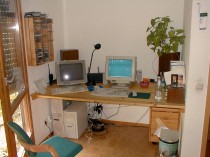I really like my Apple products as you might have read in the my way to Apple blog post, but there are still some things I want to have changed or improved. In former times when I used Gentoo Linux on conventional PC hardware, most of these thing could have been fixed on my own. So this is more or less the only disadvantage of using Apple products.
In the hope of some apple execute to be bored and browsing the web, I want to give a list of all the changes and improvements I would like to see on future Apple products. For most of the points I already filled a feedback form on the Apple Feedback page or sent an email to Steve Jobs or Tim Cook. I you like some of my suggestions, feel free to do the same! Continue reading
